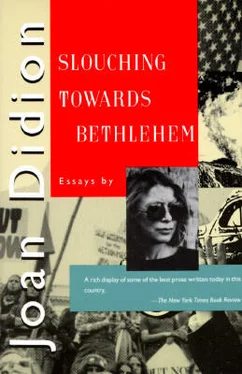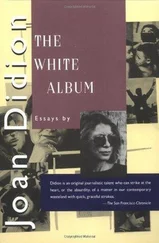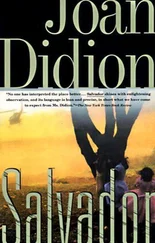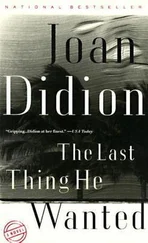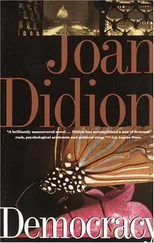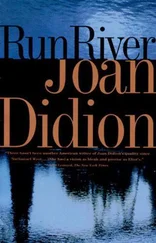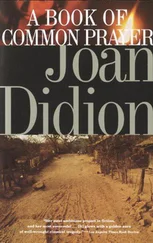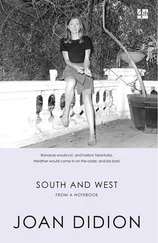I have long been interested in the Center’s rhetoric, which has about it the kind of ectoplasmic generality that always makes me sense I am on the track of the real souffle, the genuine American kitsch, and so not long ago I arranged to attend a few sessions in Santa Barbara. It was in no sense time wasted. The Center is the most perfectly indigenous cultural phenomenon since the Encyclopaedia Britannica’s Syntopicon, which sets forth “The 102 Great Ideas of Western Man” and which we also owe to Robert, or Dr., Hutchins. “Don’t make the mistake of taking a chair at the big table,” I was warned sotto wee on my first visit to the Center. “The talk there is pretty high-powered.”
“Is there any evidence that living in a violent age encourages violence?” someone was asking at the big table.
“That’s hard to measure.”
“I think it’s the Westerns on television.”
“I tend [pause] to agree.”
Every word uttered at the Center is preserved on tape, and not only colleges and libraries but thousands of individuals receive Center tapes and pamphlets. Among the best-selling pamphlets have been A. A. Berle, Jr. ’s Economic Power and the Free Society, Clark Kerr’s Unions and Union Leaders of Their Own Choosing, Donald Michael’s Cybernation: The Silent Conquest, and Harrison Brown’s Community of Fear. Seventy-five thousand people a year then write fan letters to the Center, confirming the staff in its conviction that everything said around the place mystically improves the national, and in fact the international, weal. From a Colorado country-day-school teacher: “I use the Center’s various papers in my U. S. history-current events course. It seems to me that there is no institution in the U. S. today engaged in more valuable and first-rate work than the Center.” From a California mother: “Now my fifteen-year-old daughter has discovered your publications. This delights me as she is one of those regular teenagers. But when she curls up to read, it is with your booklets.”
The notion that providing useful papers for eighth-grade current-events classes and reading for regular teenagers might not be at all times compatible with establishing “a true intellectual community” (another Hutchins aim) would be considered, at the Center, a downbeat and undemocratic cavil. “People are entitled to learn what we’re thinking,” someone there told me. The place is in fact avidly anti-intellectual, the deprecatory use of words like “egghead” and “ivory tower” reaching heights matched only in a country-club locker room. Hutchins takes pains to explain that by “an intellectual community” he does not mean a community “whose members regard themselves as ‘intellectuals. ’” Harry Ashmore frets particularly that “men of affairs” may fail to perceive the Center’s “practical utility.” Hutchins likes to quote Adlai Stevenson on this point: “The Center can be thought of as a kind of national insurance plan, a way of making certain that we will deserve better and better.”
Although one suspects that this pragmatic Couéism as a mode of thought comes pretty naturally to most of the staff at the Center, it is also vital to the place’s survival. In 1959 the Fund for the Republic bequeathed to the Center the $4 million left of its original $15 million Ford Foundation grant, but that is long gone, and because there was never any question of more Ford money, the Center must pay its own way. Its own way costs about a million dollars a year. Some twelve thousand contributors provide the million a year, and it helps if they can think of a gift to the Center not as a gift to support some visionaries who never met a payroll but “as an investment [tax-exempt] in the preservation of our free way of life.” It helps, too, to present the donor with a fairly broad-stroke picture of how the Center is besieged by the forces of darkness, and in this effort the Center has had an invaluable, if unintentional, ally in the Santa Barbara John Birch Society. “You can’t let the fascists drive them out of town,” I was advised by an admirer of the Center.
Actually, even without the Birch Society as a foil, Hutchins has evolved the E = mc 2 of all fund-raising formulae. The Center is supported on the same principle as a vanity press. People who are in a position to contribute large sums of money are encouraged to participate in clarifying the basic issues. Dinah Shore, a founding member, is invited up to discuss civil rights with Bayard Rustin. Steve Allen talks over “Ideology and Intervention” with Senator Fulbright and Arnold Toynbee, and Kirk Douglas, a founding member, speaks his piece on “The Arts in a Democratic Society.” Paul Newman, in the role of “concerned citizen,” is on hand to discuss “The University in America” with Dr. Hutchins, Supreme Court Justice William O. Douglas, Arnold Grant, Rosemary Park, and another concerned citizen, Jack Lemmon. “Apropos of absolutely nothing,” Mr. Lemmon says, pulling on a pipe, “just for my own amazement — I don’t know, but I want to know—” At this juncture he wants to know about student unrest, and, at another, he worries that government contracts will corrupt “pure research.”
“You mean maybe they get a grant to develop some new kind of plastic” Mr. Newman muses, and Mr. Lemmon picks up the cue: “What happens then to the humanities?”
Everyone goes home flattered, and the Center prevails. Well, why not? One morning I was talking with the wife of a big contributor as we waited on the terrace for one of the Center’s ready-mixed martinis and a few moments’ chat with Dr. Hutchins. “These sessions are way over my head,” she confided, “but I go out floating on air.”
1967
to be married in Las Vegas, Clark County, Nevada, a bride must swear that she is eighteen or has parental permission and a bridegroom that he is twenty-one or has parental permission. Someone must put up five dollars for the license. (On Sundays and holidays, fifteen dollars. The Clark County Courthouse issues marriage licenses at any time of the day or night except between noon and one in the afternoon, between eight and nine in the evening, and between four and five in the morning.) Nothing else is required. The State of Nevada, alone among these United States, demands neither a premarital blood test nor a waiting period before or after the issuance of a marriage license. Driving in across the Mojave from Los Angeles, one sees the signs way out on the desert, looming up from that moonscape of rattlesnakes and mesquite, even before the Las Vegas lights appear like a mirage on the horizon: “getting married? Free License Information First Strip Exit.” Perhaps the Las Vegas wedding industry achieved its peak operational efficiency between 9:00 p. m. and midnight of August 26, 1965, an otherwise unremarkable Thursday which happened to be, by Presidential order, the last day on which anyone could improve his draft status merely by getting married. One hundred and seventy-one couples were pronounced man and wife in the name of Clark County and the State of Nevada that night, sixty-seven of them by a single justice of the peace, Mr. James A. Brennan. Mr. Brennan did one wedding at the Dunes and the other sixty-six in his office, and charged each couple eight dollars. One bride lent her veil to six others. “I got it down from five to three minutes,” Mr. Brennan said later of his feat. “I could’ve married them en masse, but they’re people, not cattle. People expect more when they get married.”
What people who get married in Las Vegas actually do expect— what, in the largest sense, their “expectations” are — strikes one as a curious and self-contradictory business. Las Vegas is the most extreme and allegorical of American settlements, bizarre and beautiful in its venality and in its devotion to immediate gratification, a place the tone of which is set by mobsters and call girls and ladies’ room attendants with amyl nitrite poppers in their uniform pockets. Almost everyone notes that there is no “time” in Las Vegas, no night and no day and no past and no future (no Las Vegas casino, however, has taken the obliteration of the ordinary time sense quite so far as Harold’s Club in Reno, which for a while issued, at odd intervals in the day and night, mimeographed “bulletins ,carrying news from the world outside); neither is there any logical sense of where one is. One is standing on a highway in the middle of a vast hostile desert looking at an eighty foot sign which blinks “star-dust” or “CAESAR’S palace. ’Yes, but what does that explain? This geographical implausibility reinforces the sense that what happens there has no connection with “real” life; Nevada cities like Reno and Carson are ranch towns, Western towns, places behind which there is some historical imperative. But Las Vegas seems to exist only in the eye of the beholder. All of which makes it an extraordinarily stimulating and interesting place, but an odd one in which to want to wear a candlelight satin Priscilla of Boston wedding dress with Chantilly lace insets, tapered sleeves and a detachable modified train.
Читать дальше
